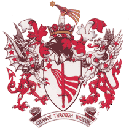Change Management – the Motivation Part
Once the research and planning work has been completed, the rubber meets the road with the effort actually to deliver the plan - this is where readiness development comes in .
However well devised the plan, it will fail if the key stakeholders are not motivated to put it into effect, if they are employees, or are unsympathetic to the programme, if they are outside stakeholders. It must be articulated and above all actively communicated to all those members of the team who have small or large parts to play in its achievement.
The classic work on the feasibility of achieving successful change is captured in Gleicher's Formula which describes the factors which must be present in the organisation for meaningful change to take place
D x V x F > R
Where:
D is Dissatisfaction with the status quo
V is Vision of what is possible;
F is Initial, concrete steps that can be taken towards achieving the vision.
While R represents to resistance to change
If the product of D, V and F is greater than R, then change is possible, but because D,V and F are multiplicative, if any one is absent or low, then the product will be low and therefore not capable of overcoming the resistance.
RPM's methodology exploits this insight and will ensure that the D is well understood and documented , the V is well structured and articulated , and the F is well defined to provide the roadmap for change.
Similarly, the R must be thoroughly understood and this is where the change stage approach is deployed to assess systematically the start points of the stakeholders in the planned change programme.
We can help devise the overall communications programme, create copy for internal or external audiences, and deliver events to get your message across - then evaluate their impact and effectiveness.
